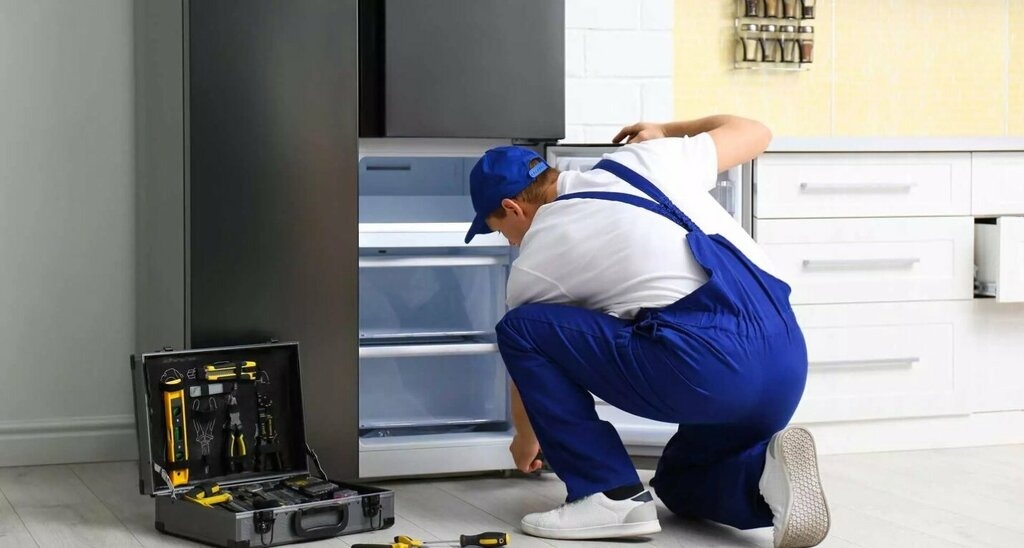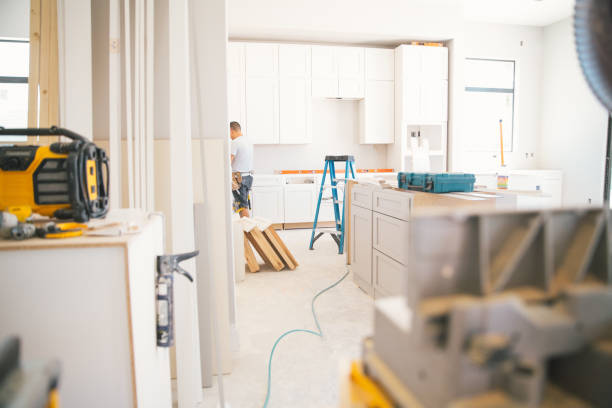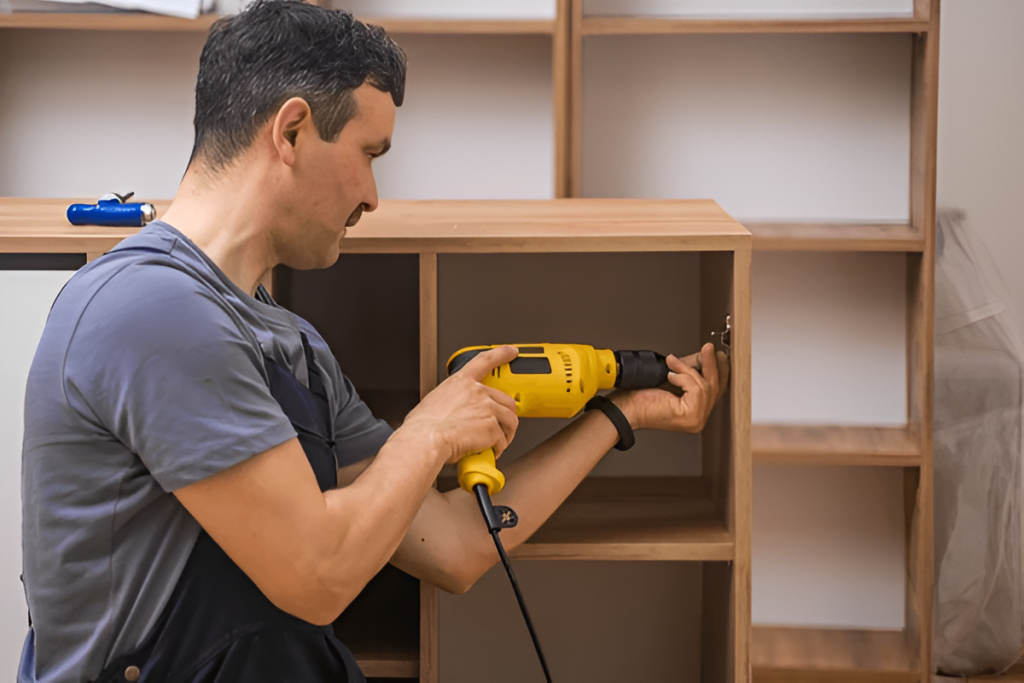You open the power bill, and your stomach drops. Where did all that energy go? Most homes have a few “quiet” power hogs running day and night. They chill food, heat water, and dry clothes while we barely notice. Yet those hidden watts add up fast. Many readers ask, “What home appliances use the most electricity?” Let’s answer that. Finally, we’ll help you plan smart upgrades that pay off. For more guides like this, Home Improvement is the best platform for practical, easy tips.
Top electricity users in most homes:
- Heating and cooling systems
- Water heaters
- Refrigerators and freezers
- Laundry appliances (washer, dryer)
- Electronics and standby devices
- Lighting
Now let’s start at the top and work down.
What Home Appliances Use The Most Electricity? Heating And Cooling Come First
Heating and cooling top the list because they run for long hours to move and condition air. Heat is the big reason these machines use so much electricity. Water heaters and dryer elements pull lots of power in a short time. Still, you can shrink that load with simple habits.
Quick ways to save more:
- Wash in cold water for most laundry.
- Run full loads to avoid repeat cycles.
- Use “Eco” or “Energy Saver” modes when available.
- Air-dry when weather allows.
- Clean the lint filter before every dryer run.
Moreover, high-efficiency washers use less water and spin faster. Therefore, dryers run for less time. Meanwhile, modern dishwashers clean well at lower temperatures. As a result, you get clean dishes and lower bills.
Fridges and Freezers – Always-On Appliances
Refrigerators never sleep. Because they run 24/7, even small wattages stack up. Nevertheless, the right setup keeps energy use steady and low. Furthermore, choose the size you truly need. Oversized units cool space and waste energy. Also, avoid cramming shelves; cold air must flow. Finally, older fridges often use far more power than newer models. Thus, when you consider what home appliances use the most electricity, steady, round-the-clock cooling sits high.
| Tip | Why It Helps |
| Keep coils clean | Improves heat release |
| Leave space around the unit | Boosts airflow and cooling |
| Set temps right (37°F / 0°F) | Prevents over-cooling |
| Close doors quickly | Reduces compressor run time |
| Replace failing door gaskets | Stops cold-air leaks |
How TVs, Laptops, And Game Consoles Add To Electricity Costs
Screens don’t always draw huge power. However, they run for many hours, and that time multiplies their impact. Plus, standby mode still sips electricity. Therefore, those tiny sips turn into steady costs. Additionally, choose a screen size that fits the room. Bigger pixels mean more energy per hour. Meanwhile, streaming boxes can use less power than full consoles. Because of that, switching devices for routine viewing can help. In many homes, electronics sit behind bigger loads. Yet, screens and standby power still matter when readers search for which home appliances use electricity most, especially over long, daily use.
Use these easy wins:
- Turn on power-saving modes.
- Lower brightness a notch.
- Shut down consoles after play.
- Unplug idle chargers.
- Group gear on a smart power strip.
Lighting – A Smaller Share of Home Electricity Use
Lighting seems tiny, yet it still matters. In many homes, lights use about five percent of power. However, that share grows with long evening use. Fortunately, fixes here are quick and cheap.
“LED bulbs use far less energy and last much longer than halogens.”
Moreover, LEDs can cut lighting energy by up to 80%. Also, they turn on at full brightness right away. Therefore, they feel easy and familiar. Meanwhile, dimmers and motion sensors add extra savings.
Simple, high-impact steps:
- Turn the lights off when you leave a room.
- Swap halogens for LEDs in high-use areas.
- Use lamps instead of overheads in the evening.
- Install motion sensors in halls and porches.
- Choose warm LEDs for bedrooms and cool ones for kitchens.
Additionally, clean shades and fixtures to boost brightness. Because clean lenses throw more light, you need fewer bulbs.
Cooking Appliances
Kitchen devices do not run all day. Still, they push high watts when heating. Ovens heat a whole box of air. Microwaves heat only the food. Therefore, microwaves often use less energy for reheating.
Furthermore, kettles waste power when overfilled. So, boil only what you need. Also, lids should be put on pots to trap heat because lids speed cooking, burners run for less time. In many homes, kitchen gear uses about four percent of power. That share may rise with frequent baking. When people search for What home appliances use the most electricity, the oven rarely tops the list. Yet smarter cooking still trims real dollars.
Fast savings you can feel:
- Preheat only when a recipe truly needs it.
- Batch cook to use one hot oven for many dishes.
- Reheat in a microwave, not an oven.
- Keep oven seals tight and clean.
- Descalcify kettles for faster boils.
How to Cut Energy Use Without Buying New Stuff
Big upgrades help, yet habits matter first. Because daily choices repeat, small changes snowball into real savings. Therefore, start with easy wins you can keep.
Everyday habits that save power:
- Use Eco modes on washers and dishwashers.
- Wash clothes cold for most loads.
- Air-dry clothes when the weather allows.
- Run full loads to avoid repeat cycles.
- Turn off standby with smart plugs or strips.
Additionally, move big loads away from peak hours if your rate allows. Also, keep vents, coils, and filters clean. Because clean parts move air and heat better, they use less power. Finally, set the fridge at 37°F and the freezer at 0°F. Those targets protect food and avoid waste. When you wonder what home appliances use the most electricity, good habits lower the impact.
How To Read An Energy Label Like A Pro
Price tags show the cost today. However, energy labels hint at the cost for years. Thus, labels help you choose the true value. Always compare size, features, and the rating together.
Moreover, newer label grades range from A to G. An A means the highest efficiency. G means the worst. Meanwhile, two models of the same size can use very different powers.
Therefore, the rating often predicts your future bill. Additionally, check the annual kWh on the label. Then, multiply by your local rate. As a result, you see the likely yearly cost.
| Label Grade | What It Means | Typical Impact vs. G* |
| A–B | Excellent to Very Good | Uses far less electricity |
| C–D | Good to Fair | Uses less, but not the least |
| E–F | Below Average | Uses more than needed |
| G | Poor | Uses the most electricity |
Top of Form
Smart Tracking and Upgrades: See, Plan, and Save
You cannot fix what you cannot see. Therefore, start by tracking your daily use. Many utilities offer free apps and detailed charts. Meanwhile, a smart plug can show you exactly what a device consumes. As a result, you spot waste in days, not months.
Next, build a simple action plan:
- Set fridge and freezer to 37°F and 0°F.
- Run laundry and dishes on Eco or cold.
- Switch bulbs to LEDs in high-use rooms first.
- Kill standby power with smart strips.
- Clean coils, vents, and filters quarterly.
“Measure first. Then act. Savings follow data.” When friends ask what home appliances use the most electricity, you can now answer—and show a plan that works—and schedule upgrades when old gear fails. Choose right-sized models with better labels. Also, compare annual kWh—not just sticker price. Thus, you see the real cost over time. Finally, match features to your habits. A quick-heat oven or fast-spin washer can trim hours of use each week.
Smart Plugs and Schedules: Stop the Silent Drain
Standby power never sleeps. Many devices sip energy all night and day. Therefore, small “vampire loads” become big costs over time. However, smart plugs make stopping that drain easy.
Moreover, chargers waste energy when left in outlets. Unplug them after use. Or, place them on a scheduled plug near the door. That habit saves time and power. Meanwhile, I set my computers to sleep after short idle times. Finally, use “eco” modes on streaming boxes and TVs.
Practical starters:
- Put office gear on one smart strip.
- Schedule “Off” from midnight to 6 a.m.
- Disable console “instant on” features.
- Use voice or app controls for quick shutdowns.
“If it stays warm when ‘off,’ it still uses power.”
Track Your Usage: Simple Audits That Reveal the Truth
You cannot fix what you cannot see. Therefore, start with a quick home energy audit. First, list major appliances and electronics by room. Next, note how often you use each one. Then, check labels for watts or amps. Multiply by hours to estimate kWh. As a result, you get clear, simple rankings.
Step-by-step plan:
- Map rooms and list devices.
- Mark daily hours of use.
- Estimate kWh with simple math.
- Confirm with a plug-in meter.
- Set one new habit per week.
Then, repeat the audit next month. Compare notes and celebrate wins. Small changes stack into real money. Finally, share the results with your family. Because everyone uses the devices, everyone can help.
FAQs
- Which home appliances use the most energy overall?
Heating and cooling usually lead. Next come water heating, fridges, washers, and dryers.
- Do electronics matter if each uses little?
Yes. Many run for hours daily. Also, standby power adds up across devices.
- How can I lower laundry energy without new machines?
Wash cold, spin fast, and air-dry when possible. Moreover, clean the dryer lint filter every load.
- Is it worth replacing an old fridge that still works?
Often yes. Newer models can cut usage by hundreds of kWh each year. Therefore, total savings can repay the cost over time.
Know Your Power, Then Act
Electric bills feel complex. However, your choices can be simple. First, focus on heat-making machines and always-on coolers. Then, fix daily habits that waste power. Finally, plan smart upgrades when budgets allow. Because you now know what home appliances use the most electricity, you can act confidently. Moreover, start with one room this week. Change bulbs, set fridge temps, and switch devices fully off at night. As a result, your next bill can reflect real progress. And remember: small steps, repeated often, beat big plans that never start. For easier energy fixes, browse Home Improvement and turn smart habits into real savings.










